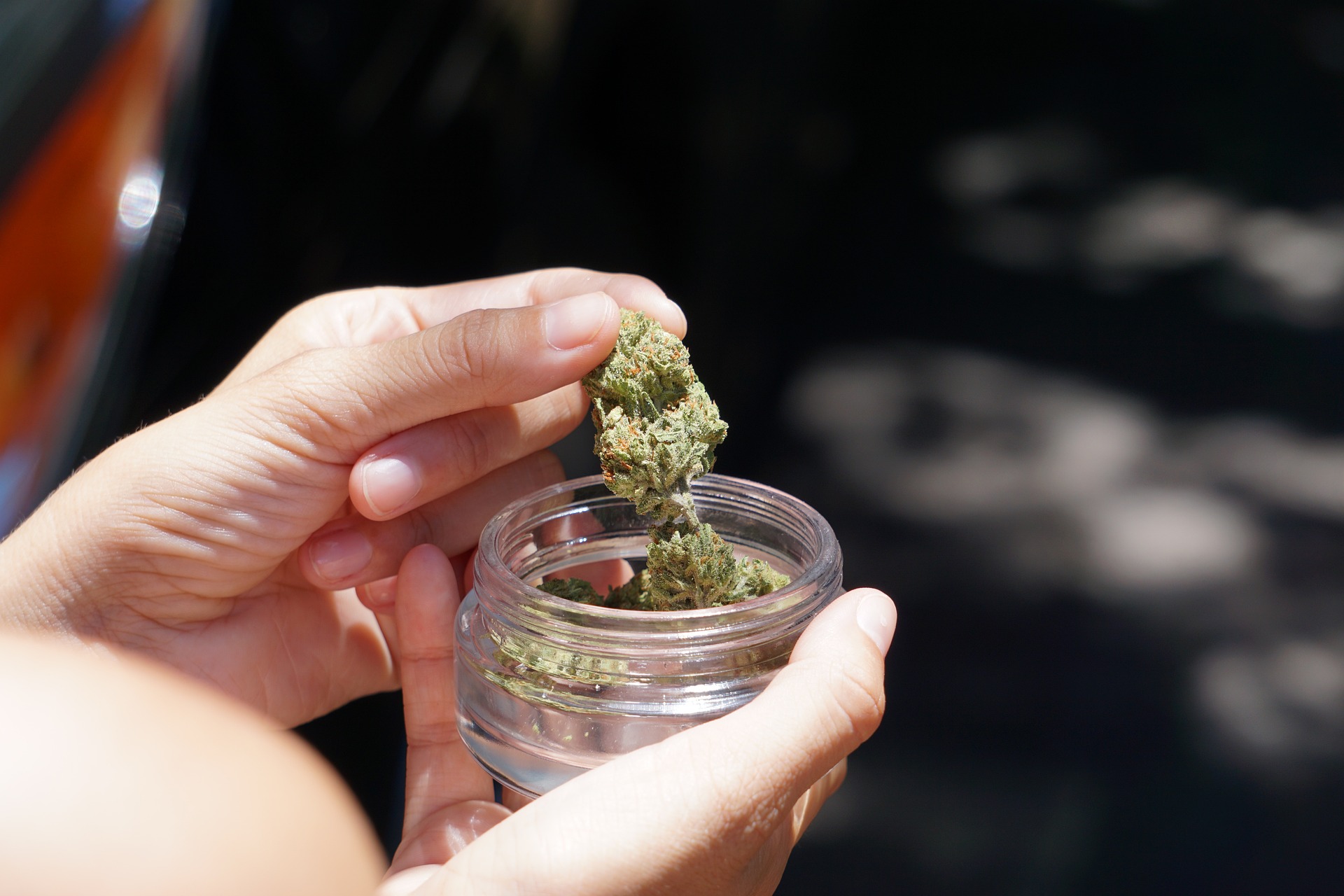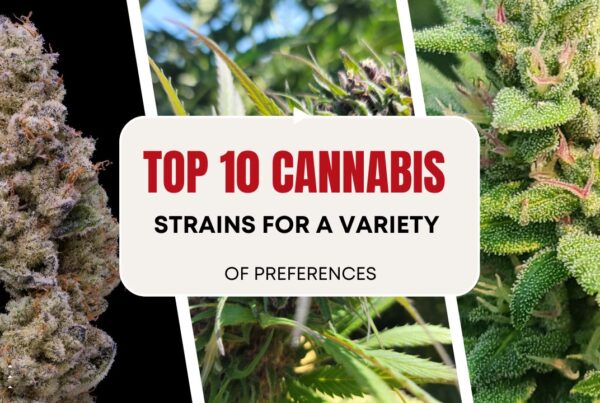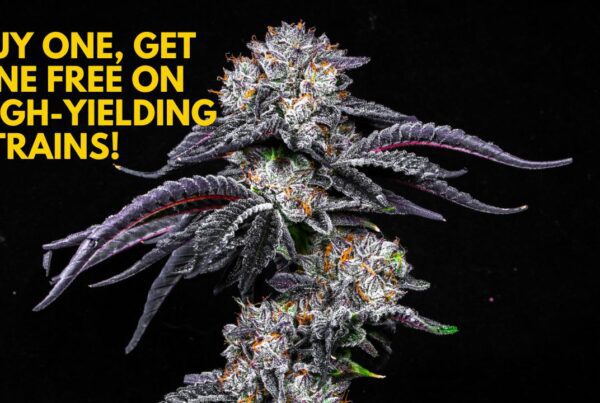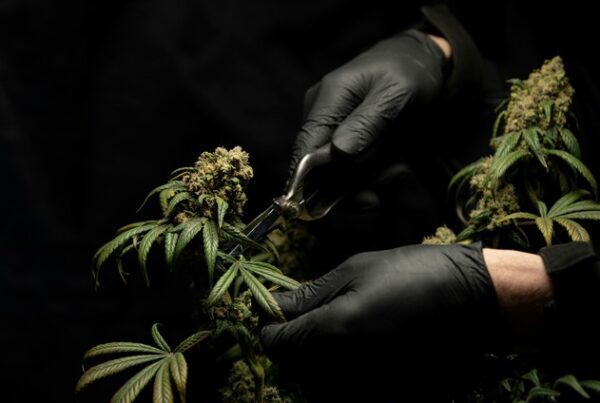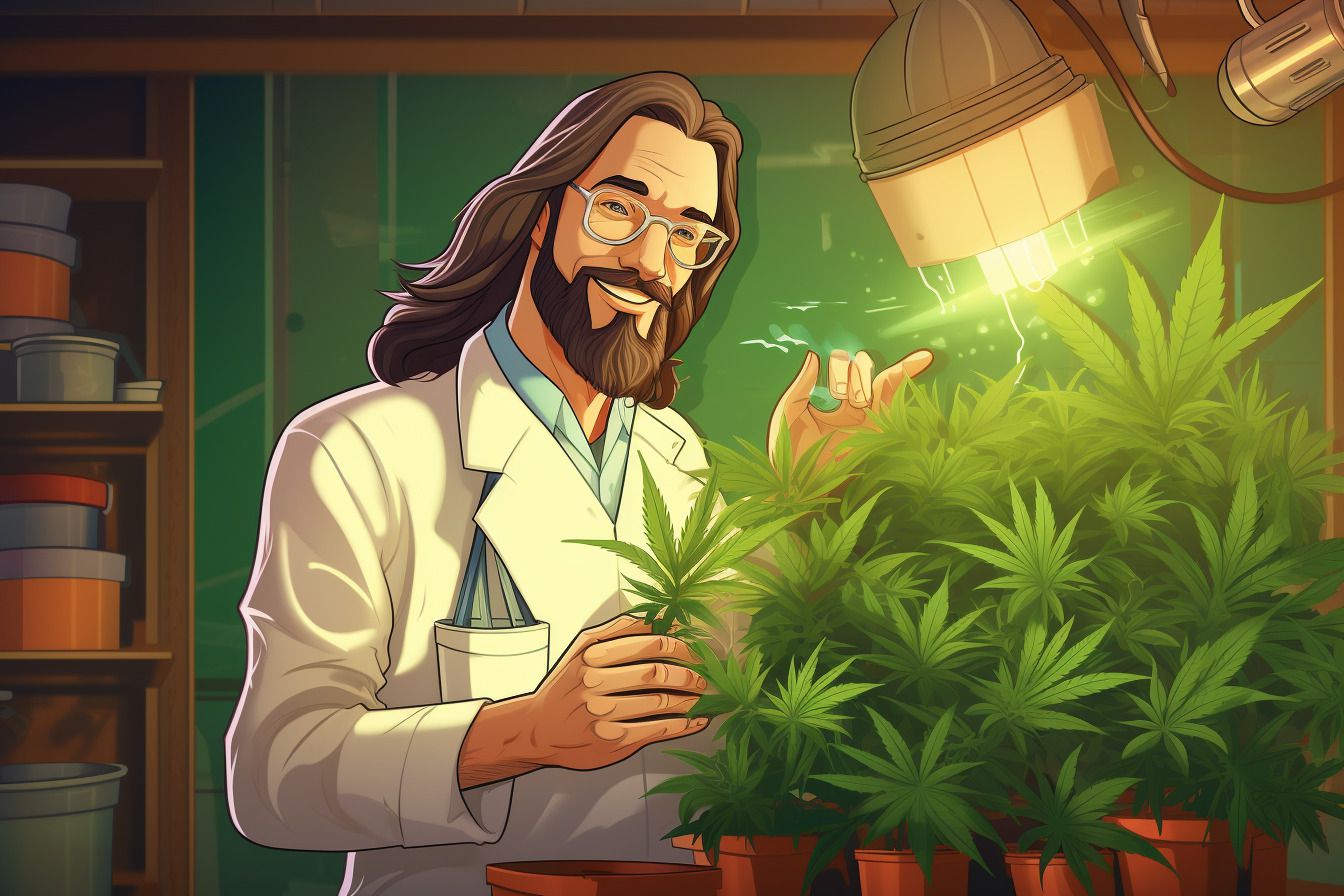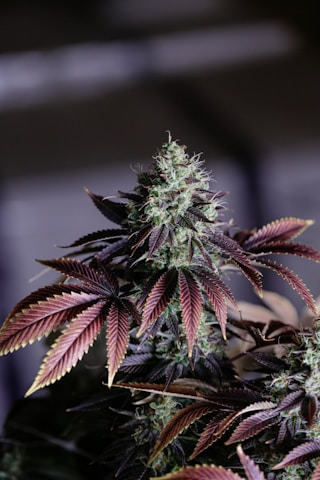
Welcome to the world of cannabis cultivation, where the quest for optimizing THC content reigns supreme. In this dynamic landscape, understanding the intricacies of maximizing THC levels is crucial for both commercial growers and enthusiasts alike. From selecting the right strains to implementing cutting-edge cultivation techniques, the pursuit of potent cannabis is a blend of science and art. Join us as we delve into the essential factors that influence THC production, explore the latest trends in genetic engineering, and uncover the secrets behind achieving that perfect balance of cannabinoids. Whether you’re a seasoned cultivator or a curious newcomer, this guide will equip you with the knowledge and tools needed to navigate the realm of optimizing THC content in cannabis. Get ready to elevate your understanding and appreciation of this versatile plant as we unravel the mysteries behind what you need to know about maximizing THC content.
The Science Behind THC Production
When it comes to the potency of THC in cannabis flowers, various factors play a crucial role. Recent advancements in breeding have led to cultivars testing closer to 25% THC, surpassing the previous standard of 18%. Factors like nutrition and time in flower need to be carefully adjusted to achieve specific production goals. The interplay of these factors can have a significant impact on THC potency, especially when considering theories like the entourage effect.
THC, the most common phytocannabinoid in cannabis, is produced in the plant via an allele co-dominant with CBD. It acts as a partial agonist at CB1 and CB2 receptors, exhibiting various effects such as psychoactive properties, analgesic benefits, muscle relaxation, and more. Additionally, THC has shown neuroprotective antioxidant properties and anti-inflammatory effects.
THCV, a propyl analogue of THC, has garnered interest for its ability to modulate intoxication and display anticonvulsant properties. It can produce weight loss, decrease body fat, and has shown promising results in suppressing pain behavior in mice. Understanding the science behind THC and related compounds sheds light on the complexities of cannabis production and its potential therapeutic applications.
Genetic Factors Impacting THC Content
One of the holy grails of cannabis cultivation is achieving consistently high concentrations of THC. A recent trend in both the recreational and medical markets is the increase in the threshold for what defines a high concentration. In the medical sector, anything over 18% THC was considered on the higher end of the potency spectrum. However, recent advancements in breeding and the continuous pursuit for even higher testing cultivars that are seen in the adult-use market have meant this number now pales compared to emerging prized cultivars that are testing closer to 25% THC. Some of the better genetics distributors will also be transparent when it comes to information regarding the specifics of the cultivation methods used to achieve THC levels. This not only helps to manage your expectations when growing new cultivars for the first time but also reaffirms that the potency of a genetic is tied to a number of other contributing factors. The effect of interlinked factors in influencing THC in a way that is greater than the sum of their parts – could also be revealed. Especially if theories like the entourage effect are experimentally demonstrated, this could be particularly exciting. Observations of the dilution effect are also revealing that some factors such as nutrition and time in flower need to be adjusted to reflect production goals. As the most obvious and well-known factor, we had to put it first. The profile of your cultivar when it comes to secondary metabolite production is inherently pre-determined by its genes. In cannabis, the total potential THC levels are determined by the levels of THCA synthesis within the plant which are under genetic control (De Meijer 2014).
THCV
THCV is a propyl analogue of THC and can modulate intoxication of the latter, displaying 25% of its potency in early testing. A recrudescence of interest accrues to this compound, which is a CB1 antagonist at lower doses but is a CB1 agonist at higher doses. THCV produces weight loss, decreased body fat and serum leptin concentrations with increased energy expenditure in obese mice. THCV also demonstrates prominent anticonvulsant properties in rodent cerebellum and pyriform cortex. THCV appears as a fractional component of many southern African cannabis chemotypes, although plants highly predominant in this agent have been produced. THCV recently demonstrated a CB2-based ability to suppress carageenan-induced hyperalgesia and inflammation, and both phases of formalin-induced pain behavior via CB1 and CB2 in mice.
Optimal Growing Conditions for High THC
When aiming to maximize the THC content of cannabis plants, it is crucial to provide the optimal growing conditions. High temperatures can be detrimental to THC production, as temperatures of 30°C or higher can lead to greater evaporation of terpenes and less cannabinoid production. To preserve the THC levels and organoleptic qualities of the plant, it is recommended to maintain temperatures below 25°C within the grow room or tent.
There is ongoing debate regarding the impact of UV light on THC levels. While some studies suggest that UV light can increase THC content, others refute this claim. It is essential to monitor the plant’s trichomes during flowering, as the THC content peaks at a certain point before degrading. Harvesting when the majority of trichomes are milky in color can help capture the plant’s peak THC content.
Factors such as UV protection, nutrient management, and genetic transparency play significant roles in determining THC potency. Recent advancements in breeding have led to cultivars with THC levels exceeding 25%, showcasing the continuous pursuit of higher potency strains in the market. Nutrient research has shed light on how different nutrient concentrations affect THC production, emphasizing the importance of proper nutritional management for maximizing phytocannabinoid production.
Studies have shown that THC potency can be influenced by various factors, including nutrient availability and plant stress responses. The cannabinoid dilution effect suggests that increasing yields may lead to decreased potency due to nutrient availability. Understanding the interplay of these factors and their combined effect on THC potency is crucial for achieving desired production goals.
Research on cannabinoids like THCV, a propyl analogue of THC, has revealed its potential effects on modulating intoxication, weight loss, and anticonvulsant properties. THCV’s ability to interact with CB1 and CB2 receptors highlights its diverse pharmacological properties, making it a compound of interest in cannabis research.
Maintaining optimal growing conditions, monitoring plant development, and understanding the interlinked factors influencing THC potency are essential for cultivating cannabis plants with high THC levels.
Harvesting and Processing Techniques for THC Preservation
When it comes to preserving the potency of THC in cannabis, proper harvesting and processing techniques play a crucial role. The commonly used extraction procedures to recover THC and CBD in oil form may not be exhaustive, leading to lower than declared amounts of these compounds in the final preparations. CBN, a degradation product of THC, can be present in minimal quantities in samples of decoctions, with higher quantities found in decoctions prepared using specific methods.
All preparations discussed are based on flowering tops from a specific type of Cannabis, with titrated concentrations of active compounds measured in the unprocessed material. Adjusted formulae are used to calculate total THC and CBD content, considering the molecular weights of different components.
After harvest, proper drying and curing techniques are essential for preserving and enhancing cannabis potency. Drying buds slowly in a controlled environment and curing them in glass jars help remove excess moisture while preserving terpenes and cannabinoids. Adequate drying and curing contribute to a smoother smoking experience and can help maximize potency.
The timing of the harvest is critical for cannabis potency. Harvesting too early or too late can impact cannabinoid levels, with late harvesting potentially leading to a decrease in THC content as it converts to other cannabinoids like CBN. Monitoring trichome development and maturity can help determine the optimal harvest window for maximum potency.
Factors affecting THC potency include cultivar characteristics, harvest timing, and cultivation techniques. In-process testing is crucial for determining peak potency, and controlled environmental factors like temperature can influence THC levels. High temperatures can negatively impact THC production, emphasizing the need to maintain optimal growing conditions.
Optimizing THC preservation in cannabis involves a combination of proper harvesting, processing, and cultivation techniques. By understanding the factors that influence potency and implementing best practices, growers can maximize the THC content of their plants while preserving their quality and efficacy.
Innovative Approaches to THC Enhancement
In short, determining how and why canopy management techniques alter THC concentration is complicated and cannot simply be put down to the effects of light intensity. To simplify we have chosen to capture this contributing factor under the plant architecture heading as a way of highlighting what research has observed but is yet to convincingly explain. The focus of this article is the cultivation processes that can be managed in the grow room, although it is by no means an exhaustive list. We won’t focus too much on post-harvest processes related to packaging or processing methods like freeze-drying and extraction that could also impact the potency of flowers. By the end of this post, you should be familiar with several biological, environmental, and manufacturing determinants of potency. Use this list to optimize your current processes, identify potential risks, and guide you in what to look out for if the potency of your cultivars starts changing. Learn more at. BigLeafConsultants.com .
Architecture Manipulations and THC Concentration
In five out of the eight architecture manipulations (including a control), the concentrations of THC were greater in locations lower than the apical meristem (Danzinger and Bernstein 2021b). This confirmed the findings from another similar experiment from the same group on different high THC cannabis genotypes, where they also found cultivating smaller-sized plants improved the overall uniformity of their chemical profile (Danzinger and Bernstein 2021a). The effect of interlinked factors in influencing THC in a way that is greater than the sum of their parts – could also be revealed. Especially if theories like the entourage effect are experimentally demonstrated, this could be particularly exciting. Observations of the dilution effect are also revealing that some factors such as nutrition and time in flower, need to be adjusted to reflect production goals. These observations seemed to confirm the common theory that flowers higher up in the canopy and exposed to the most light were higher in THC due to the proposed role of THC as a UV protectant or plant sunscreen (Lydon 1987). However, this seemingly probable notion has been challenged by more recent data from a group of researchers in Israel.
THCV
THCV is a propyl analogue of THC, and can modulate intoxication of the latter, displaying 25% of its potency in early testing (Gill et al., 1970; Hollister, 1974). A recrudescence of interest accrues to this compound, which is a CB1 antagonist at lower doses (Thomas et al., 2005), but is a CB1 agonist at higher doses (Pertwee, 2008). THCV produces weight loss, decreased body fat and serum leptin concentrations with increased energy expenditure in obese mice (Cawthorn et al., 2007; Riedel et al., 2009). THCV also demonstrates prominent anticonvulsant properties in rodent cerebellum and pyriform cortex (Hill et al., 2010). THCV appears as a fractional component of many southern African cannabis chemotypes, although plants highly predominant in this agent have been produced (de Meijer, 2004). THCV recently demonstrated a CB2-based ability to suppress carageenan-induced hyperalgesia and inflammation, and both phases of formalin-induced pain behavior via CB1 and CB2 in mice (Bolognini et al., 2010).
CBN
CBN, a degradation product of THC, is present in minimal quantities in the samples of decoctions. The greatest quantities are present in decoctions prepared with methods B-4 and B-5, in which the highest amount of Cannabis flowering tops was used. All of the preparations described below were based on flowering tops from type FM2 Cannabis purchased from the Pharmaceutical Chemicals Military Facility in Florence. The titrated concentrations of active compounds in the unprocessed material (May 2017) were 0.40% ± 0.02% for THC, 5.74% ± 0.18% for THCA, 0.29% ± 0.03% for CBD, and 8.70% ± 0.17% for CBDA. Consequently, the total THC content, calculated using the formula %THC tot = %THC + (0.877 × %THCA), was 5.43% ± 0.15% and the total CBD content, calculated using the formula %CBD tot = %CBD + (0.877 × %CBDA), was 7.92% ± 0.18%. The formulae adjusted for the differing molecular weights of the cannabinoid and carboxylic conjugative components of each cannabinoid. Indeed, the decarboxylated form has a lower molecular weight than that of the carboxylated one because of the loss of a CO2 molecule. The ratio between the two molecular weights is 0.877 (Pacifici et al., 2017).
Grow Light Kit Selection
Choosing a good grow light kit is extremely important if you want to achieve the maximum potential in terms of the amount of THC produced by your plants. For this, the classic HPS or high-pressure sodium equipment can work correctly, although in recent years professionals have opted for CMH or ceramic halide lamps or, directly, full-spectrum LED lamps. This last aspect is important because as we will see in the next point, the broader the spectrum of light that plants receive, the more cannabinoids they will produce. The use of UV lamps in indoor cultivation has become more and more widespread as more and more evidence (mostly testimonials) seems to show that it increases both the production of glandular trichomes and the total THC content in them. There are not a few scholars who believe that the main reason why the cannabis plant produces trichomes (and, in them, hundreds of substances such as cannabinoids, terpenes, or flavonoids) is to protect itself from exposure to sunlight, more specifically as a method of defense against ultraviolet rays; Thus, it could be thought (and this is actually the case) that if exposure to UV rays is increased, the plant’s response will be greater, producing more resin and more THC.
Optimize Cannabis Potency
We provide the highest quality supplies for successful cultivation of plant life. Learn More . Proper lighting is essential for optimizing cannabis potency. Providing sufficient light intensity and the right spectrum throughout the plant’s life cycle is crucial. During the flowering stage, increasing light intensity can boost cannabinoid production. Using high-quality, full-spectrum grow lights or utilizing natural sunlight effectively can contribute to enhanced potency. Balanced nutrient management is crucial for maximizing cannabis potency. Providing the plant with the necessary macronutrients (nitrogen, phosphorus, and potassium) as well as micronutrients can support healthy growth and cannabinoid production. However, it is important to strike a balance, as excessive nutrient levels can lead to imbalances and potentially reduce potency. Let your plants get a little thirsty. Not parched. Not shriveled. Just remove a little bit of moisture from their lives. If you can reduce the humidity in your grow room, that’s the perfect move.
Regulatory Landscape for THC Levels
THC (Table 1) is the most common phytocannabinoid in cannabis drug chemotypes, and is produced in the plant via an allele co-dominant with CBD (de Meijeret al., 2003). THC is a partial agonist at CB1and cannabinoid receptor 2 (CB2) analogous to AEA, and underlying many of its activities as a psychoactive agent, analgesic, muscle relaxant and antispasmodic (Pacheret al., 2006). Additionally, it is a bronchodilator (Williamset al., 1976), neuroprotective antioxidant (Hampsonet al., 1998), antipruritic agent in cholestatic jaundice (Neffet al., 2002) and has 20 times the anti-inflammatory power of aspirin and twice that of hydrocortisone (Evans, 1991). THC is likely to avoid potential pitfalls of either COX-1 or COX-2 inhibition, as such activity is only noted at concentrations far above those attained therapeutically (Stottet al., 2005).
THCV (Table 1) is a propyl analogue of THC, and can modulate intoxication of the latter, displaying 25% of its potency in early testing (Gillet al., 1970;Hollister, 1974). A recrudescence of interest accrues to this compound, which is a CB1antagonist at lower doses (Thomaset al., 2005), but is a CB1agonist at higher doses (Pertwee, 2008). THCV produces weight loss, decreased body fat and serum leptin concentrations with increased energy expenditure in obese mice (Cawthorneet al., 2007;Riedelet al., 2009). THCV also demonstrates prominent anticonvulsant properties in rodent cerebellum and pyriform cortex (Hillet al., 2010). THCV appears as a fractional component of many southern African cannabis chemotypes, although plants highly predominant in this agent have been produced (de Meijer, 2004). THCV recently demonstrated a CB2-based ability to suppress carageenan-induced hyperalgesia and inflammation, and both phases of formalin-induced pain behaviour via CB1and CB2in mice (Bologniniet al., 2010).
One of the most popular theories about THC is that it protects cannabis from UV radiation (Lydon, 1987, Eichhorn Bilodeau et al, 2019). It has also been that suggested THC prevents a loss of moisture and protects plants from high temperatures and heat stress (Gülck and Møller, 2020). To complicate matters further, the problem of standardization doesn’t only apply to testing protocols but also to the lack of homogeneity in samples that are sent to laboratories. Even if your facility’s testing procedures are internally validated, don’t be surprised if the third-party testing results of your flower are even slightly different. In the medical sector, anything over 18% THC was considered on the higher end of the potency spectrum. However, recent advancements in breeding and the continuous pursuit for even higher testing cultivars that are seen in the adult-use market have meant this number now pales compared to emerging prized cultivars that are testing closer to 25% THC. Currently, there is no single analytical method to asses potency, and this lack of standardization of testing procedures in the industry means there is significant variability between protocols (Jikomes and Zoorob 2018). This has caused critics to question the reliability of lab reports they believe are increasingly compromised, especially in a climate where consumers and distributors place %THC as the biggest marker of quality. This is becoming more concerning amidst the growing controversy that questions the legitimacy of testing protocols given the emerging practice of lab shopping, i.e. When facilities look for labs whose procedures give higher potency results allowing them to sell a product at higher prices. Combined with this are the corrupt practices that are reportedly used by laboratories to manipulate results to suit client requests for high numbers, so-called potency inflation. (Jikomes and Zoorob 2018). The effect of interlinked factors in influencing THC in a way that is greater than the sum of their parts – could also be revealed. Especially if theories like the entourage effect are experimentally demonstrated, this could be particularly exciting. Observations of the dilution effect are also revealing that some factors such as nutrition and time in flower, need to be adjusted to reflect production goals. One of the difficulties in evaluating the influence of light quality is the lack of standardization that exists between experiments and the light intensity (PPFD) they test, the specific wavelengths of light they use (spectrum), and the timing of application. This can prevent meaningful comparisons between experimental results which are also impacted by the different cultivars used.
All of the preparations described below were based on flowering tops from type FM2Cannabispurchased from the Pharmaceutical Chemicals Military Facility in Florence. The titrated concentrations of active compounds in the unprocessed material (May 2017) were 0.40% ± 0.02% for THC, 5.74% ± 0.18% for THCA, 0.29% ± 0.03% for CBD, and 8.70% ± 0.17% for CBDA. Consequently, the total THC content, calculated using the formula %THC tot = %THC + (0.877 × %THCA), was 5.43% ± 0.15% and the total CBD content, calculated using the formula %CBD tot = %CBD + (0.877 × %CBDA), was 7.92% ± 0.18%. The formulae adjusted for the differing molecular weights of the cannabinoid and carboxylic conjugative components of each cannabinoid. Indeed, the decarboxylated form has a lower molecular weight than that of the carboxylated one because of the loss of a CO2molecule. The ratio between the two molecular weights is 0.877 (Pacifici et al., 2017).
Third-Party Testing: Independent third-party testing ensures transparency and verifies the potency, purity, and safety of cannabis products. This instills confidence in consumers, knowing that the product they are using meets rigorous quality standards. Consistent Quality Control: Implementing quality control processes throughout the cultivation, extraction, and manufacturing stages helps maintain consistent quality and user experience. This includes rigorous testing, adherence to regulations, and comprehensive quality assurance protocols.
Strain Selection for THC Optimization
When it comes to optimizing THC potency in cannabis flowers, several factors come into play. Research has shown that a combination of genetic selection, cultivation techniques, and post-harvest practices can significantly impact the final THC content. By carefully choosing potent strains with high THC levels, providing optimal growing conditions, managing nutrients, controlling the environment, and employing proper harvesting and curing methods, growers can enhance the potency of their cannabis plants.
Canopy Management Techniques
One key aspect to consider is canopy management techniques, which have been found to influence THC concentration. Studies have shown that factors like plant architecture, light intensity, and cultivation methods can all play a role in determining the THC levels in cannabis flowers. For example, cultivating smaller-sized plants has been linked to improved chemical profiles and overall uniformity of THC concentration.
Environmental Conditions
Additionally, maintaining optimal environmental conditions is crucial for maximizing cannabis potency. Factors such as temperature, humidity, and airflow can all impact cannabinoid production. It’s essential to ensure that the growing environment is well-controlled to prevent issues like mold or mildew.
Strain Selection
Furthermore, selecting cannabis strains with naturally high potency is a critical first step in THC optimization. By choosing strains known for their strong cannabinoid profiles, growers can set a solid foundation for producing potent cannabis products. Breeders have developed many potent strains over the years, offering a wide selection of genetics to choose from.
Conclusion
Optimizing THC potency in cannabis involves a multi-faceted approach that includes genetic selection, cultivation techniques, and environmental control. By experimenting with different methods, observing plant responses, and adapting techniques to suit specific strains, growers can achieve higher potency levels and deliver a more potent and enjoyable cannabis experience for consumers.
Light Intensity and Spectrum Impact on THC Levels
Choosing a good grow light kit is extremely important if you want to achieve the maximum potential in terms of the amount of THC produced by your plants. For this, the classic HPS or high-pressure sodium equipment can work correctly, although in recent years professionals have opted for CMH or ceramic halide lamps or, directly, full-spectrum LED lamps. This last aspect is important because as we will see in the next point, the broader the spectrum of light that plants receive, the more cannabinoids they will produce.
There is controversy about the increase in THC or yield with the use of UV: while some studies support this theory, others strongly deny it.
In short, determining how and why canopy management techniques alter THC concentration is complicated and cannot simply be put down to the effects of light intensity. To simplify, we have chosen to capture this contributing factor under the plant architecture heading as a way of highlighting what research has observed but is yet to convincingly explain.
Initially, it seemed that the concentrations of cannabinoids including THC followed a pattern of “vertical stratification” and increased with height and were the greatest in apical flowers found at the top of the plant. Flowers on the bottom parts of plants were found in one study to have half the THC content of flowers of those on the top. Another study showed light intensity was up to 60% less in lower branches compared to the plant apex leading to the popular conclusion that light penetration affects THC content.
The effect of interlinked factors in influencing THC in a way that is greater than the sum of their parts could also be revealed. Especially if theories like the entourage effect are experimentally demonstrated, this could be particularly exciting. Observations of the dilution effect are also revealing that some factors such as nutrition and time in flower need to be adjusted to reflect production goals.
These observations seemed to confirm the common theory that flowers higher up in the canopy and exposed to the most light were higher in THC due to the proposed role of THC as a UV protectant or plant sunscreen. However, this seemingly probable notion has been challenged by more recent data from a group of researchers in Israel.
Although plants have been shown to respond to light stress by producing and accumulating secondary metabolites, the effects of wavelength and intensity on the production of secondary metabolites including THC in cannabis are limited and not well understood. Much of the research investigating how the different qualities of light (intensity, photoperiod, and spectrum) determine THC synthesis and the final concentration in flowers is contradictory.
Proper lighting is essential for optimizing cannabis potency. Providing sufficient light intensity and the right spectrum throughout the plant’s life cycle is crucial. During the flowering stage, increasing light intensity can boost cannabinoid production. Using high-quality, full-spectrum grow lights or utilizing natural sunlight effectively can contribute to enhanced potency.
Conclusion
In the quest to optimize THC content in cannabis, understanding the importance of proper nutrient balance is paramount. By following expert advice on fixing stretching cannabis plants and ensuring optimal growth and yield, cannabis growers can enhance the productivity of their plants. For those seeking Farm Bill compliant seeds with less than 0.2% THC, exploring resources like the webpage at. Proper Nutrient Balance Can provide valuable insights and products. Remember, consulting with a physician before using any hemp products is crucial. Elevate your cannabis cultivation journey with the right knowledge and resources. Visit the provided link to delve deeper into achieving the desired THC content in your cannabis plants.

